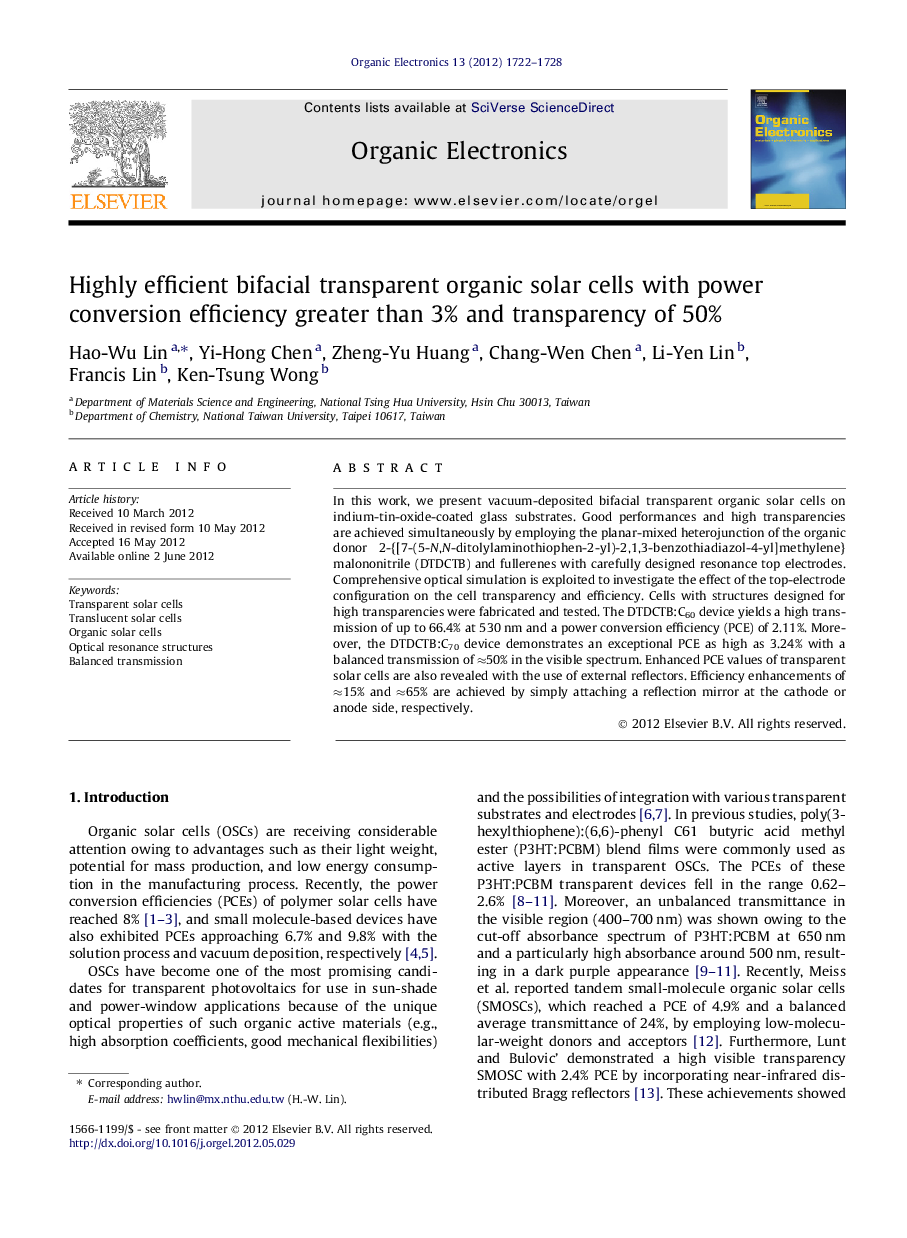| Article ID | Journal | Published Year | Pages | File Type |
|---|---|---|---|---|
| 1264575 | Organic Electronics | 2012 | 7 Pages |
In this work, we present vacuum-deposited bifacial transparent organic solar cells on indium-tin-oxide-coated glass substrates. Good performances and high transparencies are achieved simultaneously by employing the planar-mixed heterojunction of the organic donor 2-{[7-(5-N,N-ditolylaminothiophen-2-yl)-2,1,3-benzothiadiazol-4-yl]methylene}malononitrile (DTDCTB) and fullerenes with carefully designed resonance top electrodes. Comprehensive optical simulation is exploited to investigate the effect of the top-electrode configuration on the cell transparency and efficiency. Cells with structures designed for high transparencies were fabricated and tested. The DTDCTB:C60 device yields a high transmission of up to 66.4% at 530 nm and a power conversion efficiency (PCE) of 2.11%. Moreover, the DTDCTB:C70 device demonstrates an exceptional PCE as high as 3.24% with a balanced transmission of ≈50% in the visible spectrum. Enhanced PCE values of transparent solar cells are also revealed with the use of external reflectors. Efficiency enhancements of ≈15% and ≈65% are achieved by simply attaching a reflection mirror at the cathode or anode side, respectively.
Graphical abstractFigure optionsDownload full-size imageDownload as PowerPoint slideHighlights► Vacuum-deposited bifacial transparent organic solar cells are demonstrated. ► Comprehensive optical simulation is exploited. ► The device shows an efficiency up to 3.24% with a balanced transmission of 50%. ► Enhanced efficiency of device is also revealed with the use of external reflectors.
